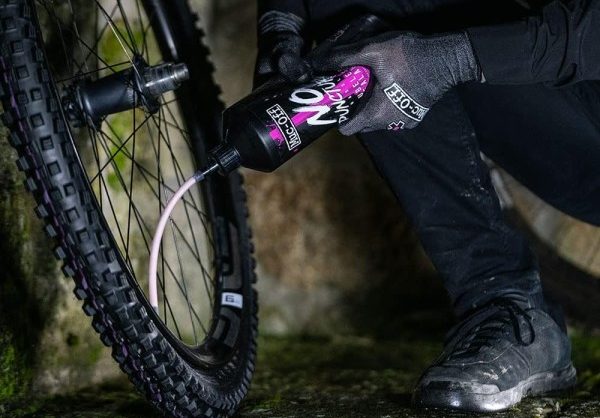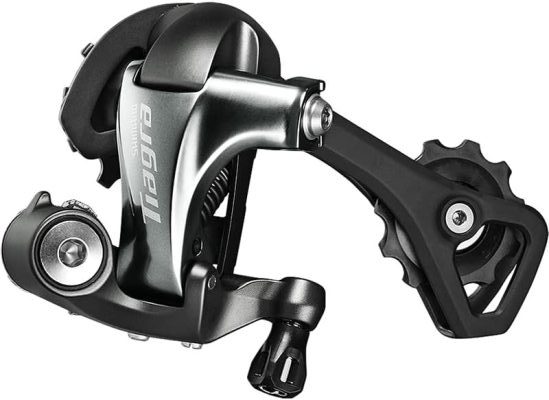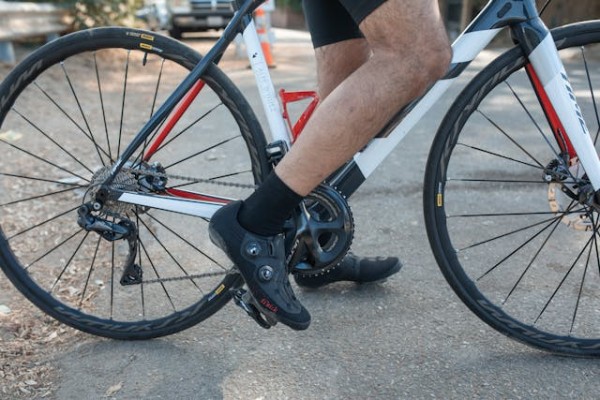If you’re a cyclist, tubeless tire sealant is like a trusty sidekick for your wheels. It’s the Robin to your Batman, the peanut butter to your jelly. In this guide, we’ll cover everything you need to know about tubeless tire sealant. From how it works to the benefits it brings, we’ve got you covered. We’ll also dive into the common types of sealant available, and provide some tips for applying it effectively.
1. How Tubeless Tire Sealant Works

Tubeless tire sealant works by creating a protective seal inside the tire, preventing air from escaping through punctures or leaks. The sealant is typically a liquid or gel-like substance that’s poured into the tire before it’s inflated. As the tire rotates, the sealant is distributed evenly, coating the inner surface of the tire.
When a puncture occurs, the sealant immediately reacts and forms a seal around the hole, effectively sealing it shut. This sealing action is possible due to the presence of tiny particles or fibers in the sealant, which quickly bond together upon contact with air.
This mechanism ensures that the sealant can effectively seal punctures of various sizes, providing a reliable and long-lasting solution for maintaining tire pressure and preventing flats.
2. Benefits of Using Tubeless Tire Sealant
One major benefit of using tubeless tire sealant is that it provides a reliable and long-lasting solution for maintaining tire pressure and preventing flats. Unlike traditional inner tubes, tubeless tire sealant is designed to seal punctures as they occur, preventing air from escaping and keeping the tire inflated. This eliminates the need to constantly check and refill tire pressure, saving you time and effort.
Additionally, tubeless tire sealant also helps to prevent flats caused by small debris like thorns or glass shards. The sealant fills in punctures as they happen, creating a temporary plug that seals the hole and allows you to continue riding without interruption. This not only enhances the overall performance and durability of your tires but also provides peace of mind knowing that you’re protected against unexpected flats.
3. Common Types of Tubeless Tire Sealant
To explore the different options available, you can consider various types of tubeless tire sealants. There are three common types of tubeless tire sealants: latex-based, ammonia-free, and eco-friendly sealants.
Latex-based sealants are the most popular choice among cyclists. They’re made from a mixture of latex, ammonia, and other additives. These sealants are known for their ability to seal punctures quickly and effectively.
Ammonia-free sealants are a good alternative for those who are sensitive to the strong smell of ammonia. These sealants use alternative chemicals to provide puncture protection.
Eco-friendly sealants are becoming increasingly popular due to their environmentally friendly composition. They’re made from natural ingredients, such as plant fibers and biodegradable polymers.
When choosing a tubeless tire sealant, consider factors such as puncture sealing ability, durability, and compatibility with your tires. It’s important to read product labels and reviews to make an informed decision.
4. Tips for Applying Tubeless Tire Sealant
To ensure proper application of tubeless tire sealant, follow these helpful tips:
- Shake the sealant bottle thoroughly before use: This ensures that the sealant is well-mixed and ready to be applied. A properly mixed sealant will be more effective in sealing punctures and preventing air leaks.
- Remove the valve core: Before adding sealant, it’s important to remove the valve core to ensure that the sealant can flow freely into the tire. Use a valve core remover tool to unscrew the valve core, allowing the sealant to be injected easily.
- Use the correct amount of sealant: It’s crucial to use the recommended amount of sealant for your tire size. Too little sealant may not be sufficient to seal punctures, while too much sealant can create an unbalanced tire and cause handling issues. Consult the manufacturer’s guidelines for the appropriate amount of sealant to use.
5. Potential Drawbacks of Tubeless Tire Sealant
While tubeless tire sealant offers many benefits, there are a few potential drawbacks to consider.
One of the main drawbacks is the possibility of sealant dry-out. Over time, the liquid sealant can evaporate or dry up, especially in hot and dry conditions. This can result in decreased puncture protection and sealant effectiveness.
Another drawback is the need for periodic maintenance. Tubeless tires require regular inspection and topping up of sealant to ensure optimal performance. Additionally, the installation process of tubeless tire sealant can be messy and time-consuming. It requires removing the tire, cleaning the rim, and injecting the sealant through the valve stem.
Lastly, some sealants may not be compatible with certain tire and rim combinations, which can limit options for riders. Despite these drawbacks, the benefits of tubeless tire sealant often outweigh the potential inconveniences for many cyclists.
Frequently Asked Questions
Can Tubeless Tire Sealant Be Used on All Types of Tires?
Tubeless tire sealant can be used on most types of tires, including road, mountain, and gravel tires. It’s designed to seal punctures and prevent air leakage, providing a reliable and hassle-free riding experience.
Whether you’re a casual rider or an avid cyclist, tubeless tire sealant is a great addition to your bike maintenance routine. It’s a simple and effective solution that ensures your tires stay inflated and ready for any terrain you encounter.
How Long Does Tubeless Tire Sealant Last Before It Needs to Be Replaced?
Tubeless tire sealant has a lifespan like a ticking clock counting down the miles. Over time, the sealant gradually loses its effectiveness and needs to be replaced. On average, it lasts anywhere from three months to one year, depending on various factors such as temperature, riding conditions, and the quality of the sealant. Regularly inspecting your tires and monitoring the sealant’s performance will help you determine when it’s time for a fresh batch.
Can Tubeless Tire Sealant Fix Larger Punctures or Cuts in the Tire?
Tubeless tire sealant can indeed fix larger punctures or cuts in the tire. It works by quickly sealing the hole and preventing air from escaping. The sealant is designed to flow into the puncture and form a flexible plug, effectively sealing the damaged area. This means that you can continue riding without having to worry about replacing the tire or dealing with a flat. It’s a convenient and effective solution for keeping your tubeless tires in good condition.
Is It Necessary to Remove the Old Sealant Before Adding the New Sealant?
Yes, it’s necessary to remove the old sealant before adding new sealant to your tubeless tire. By removing the old sealant, you ensure that the new sealant can effectively seal any punctures or cuts in your tire. Some may argue that removing the old sealant is a hassle, but it’s a crucial step in maintaining the performance and effectiveness of your tubeless tire sealant.
Can Tubeless Tire Sealant Be Used in Extremely Hot or Cold Temperatures?
Tubeless tire sealant can be used in both extremely hot and cold temperatures. It’s designed to work effectively in a wide range of conditions, ensuring that your tires remain sealed and protected.
Whether you’re riding in scorching summer heat or freezing winter chill, the sealant will continue to do its job. It’s important to choose a sealant that’s specifically formulated to handle extreme temperatures, as this will provide the best performance and reliability for your tubeless tires.
Conclusion
In conclusion, tubeless tire sealant is a game-changing solution for cyclists seeking a smoother and safer ride. Its liquid formula works wonders by sealing punctures on the go, ensuring a hassle-free journey.
The benefits of this innovative product are endless, from improved traction to reduced rolling resistance. However, it’s important to carefully choose the right type of sealant and apply it correctly to avoid potential drawbacks.





